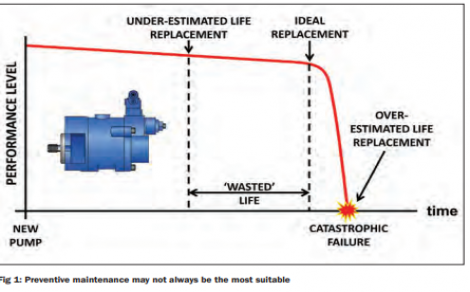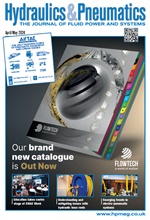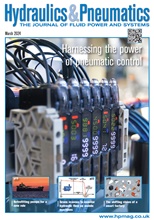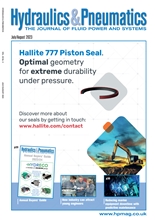- Home » Editorial » Hydraulics
Seven reasons to monitor hydraulic flow on mobile machines

Martin Cuthbert, Webtec’s Managing Director says there are seven good reasons why it makes sound business sense to monitor hydraulic flow on mobile machines. H&P reports.
Such are the advantages available to both OEMs and end users from the permanent installation of flow monitoring equipment that Martin Cuthbert, Webtec’s Managing Director, sees it as the ‘missing link’ in on- and off-highway hydraulic condition monitoring.
By listening to a large number of customers in the mobile machinery market over the past five years, Cuthbert says Webtec was able to identify seven clear challenges that set the premise for the development of a new hydraulic flow meter which meets the needs of modern hydraulic condition monitoring and delivers considerable business gains. Specifically, the challenges were: minimising unscheduled downtime to save costs, monitoring cycle times to stay abreast of machine health, reducing warranty costs by understanding machine usage patterns, improving energy efficiency to save on fuel, optimising actuator control to enhance certainty, improving machine safety to protect workers and supporting the elimination of live work (ELW).
1. Minimise unscheduled downtime
Installing a flow meter is one of the best ways to monitor pump and actuator performance, allowing engineers to schedule service requirements before the onset of catastrophic failure and enormous costs. Cuthbert explains that a day of downtime for a municipal vehicle could amount to £15,000 a day, while for mining in the precious metals industry, costs can sometimes top £50,000 an hour.
Sure enough, hydraulic machine condition monitoring is not new, but in historical terms many considered ‘flow’ too difficult, so most machines rely on pressure measurement as it is relatively simple to perform. However, pressure is not always useful in locating a fault. For example, suppose a cylinder in normal operation takes 5 seconds to travel full stroke and the applied load creates an operating pressure of 60 bar. If a fault occurs, caused perhaps by a loss of pump flow or circuit leakage, the reduced flow would cause the cylinder piston to move slowly, but it would still lift the load. If the load lifts then the pressure must still be 60 bar, so the pressure gauge would read the same as normal.
Instead, to diagnose a problem with actuator speed (too much or too little) it is necessary to measure flow rate. Such an approach can help pinpoint situations such as: insufficient flow caused by pump wear; excessive return or drain line flow prompted by increased component leakage; or a mismatch between actuator flow rate and speed (indicating a loss of volumetric efficiency of the actuator).
As a result, hydraulic flow testers and data loggers are ideal tools says Cuthbert in preventative maintenance strategies. Here, scrutinising pump health periodically helps to estimate remaining life and ensure replacement before catastrophic failure, while simultaneously avoiding the waste of any useful pump life.
-
Smart Manufacturing & Engineering Week
05 - 06 June, 2024
NEC, Birmingham -
HILLHEAD 2024
25 June, 2024, 9:00 - 27 June, 2024, 16:00
Hillhead Quarry, Buxton, Derbyshire UK










